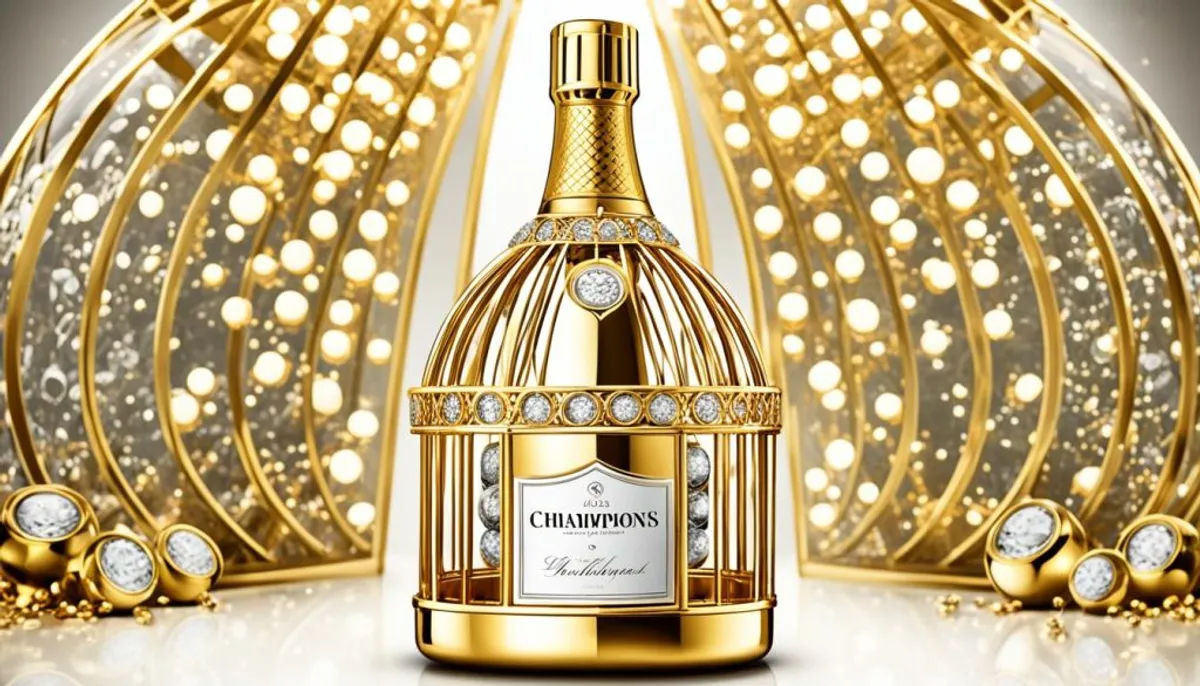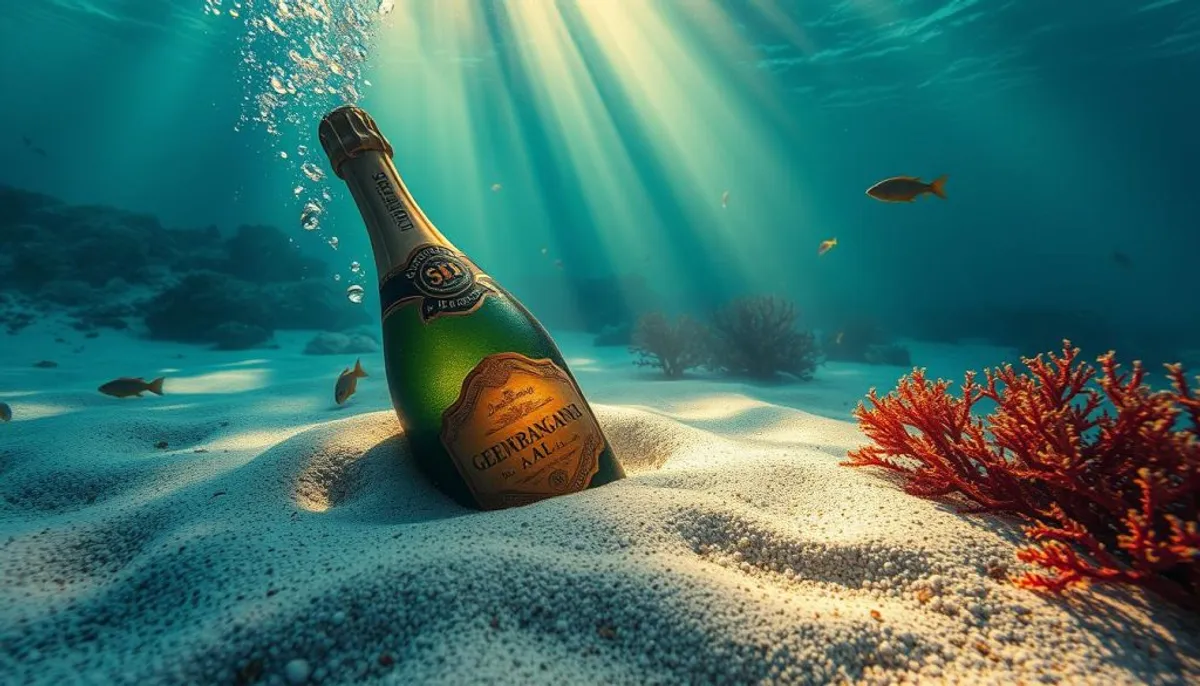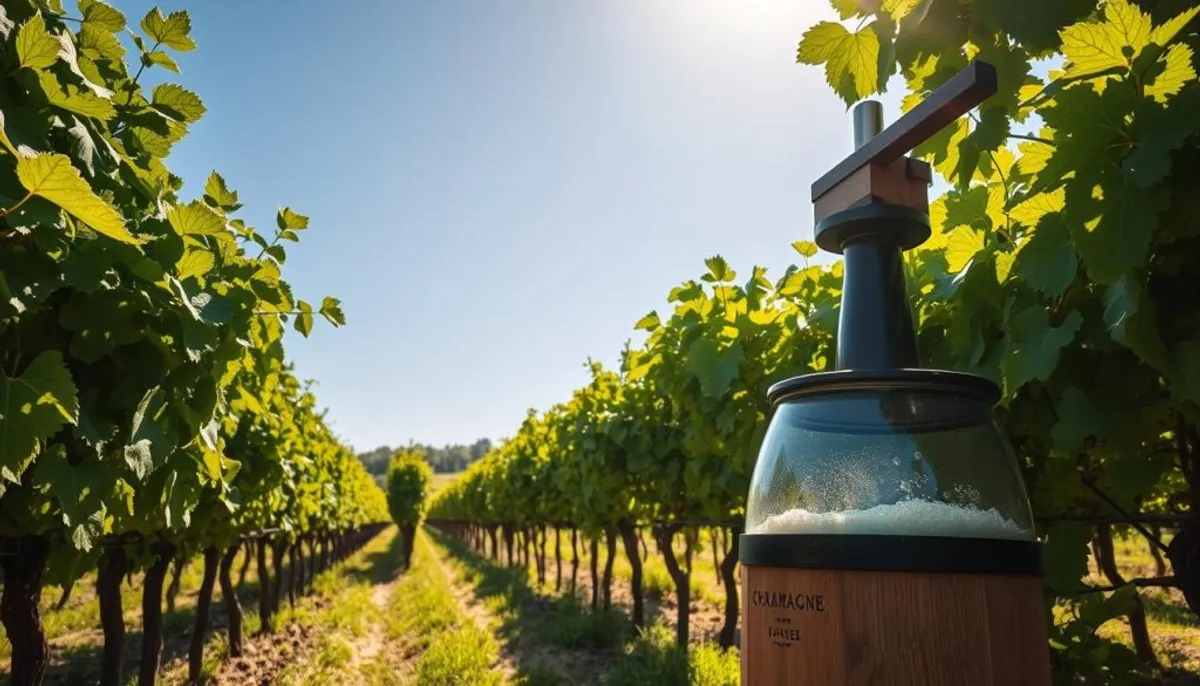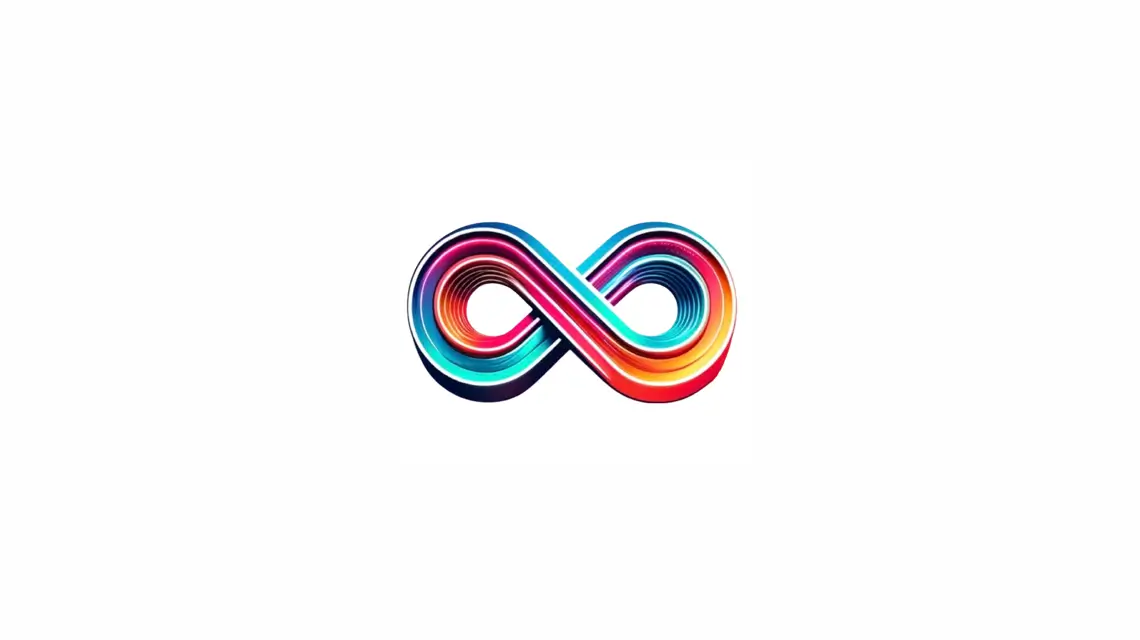Luxury champagne aficionados, prepare to indulge in the finest sparkling wines of 2025. These rare vintages and high-end champagnes are not mere beverages; they are liquid treasures. Each bottle represents a pinnacle of opulence, a true investment in the world of luxury.
The champagne market has ascended to unprecedented levels of extravagance. At the apex is the Goût de Diamants, Taste of Diamonds 2013, commanding an astonishing 1.838 million euros. A single serving of this elite champagne will cost a staggering €328,000, a testament to its unparalleled value.

Price is merely a reflection of the prestige these premium sparkling wines hold. Their exceptional quality, limited production, and exquisite packaging all contribute to their allure. Consider the Armand De Brignac’s Midas 2013 Rosé 30 liters, which sold for a staggering €258,000. It transcends the ordinary, becoming a masterpiece in its own right.
Key Takeaways
- Goût de Diamants leads the pack at 1.838 million euros per bottle
- Armand De Brignac’s Midas 2013 Rosé 30 liters sold for €258,000
- Dom Pérignon P3 Plénitude Brut Rosé priced at USD 5305
- Krug Clos d’Ambonnay Blanc de Noirs Brut costs USD 3341
- Exceptional champagnes typically start at over 3,000 euros per bottle
Understanding Luxury Champagne Market
The luxury champagne market is deeply rooted in France’s Champagne region, with a rich heritage. It combines centuries-old traditions with modern wine investment opportunities and luxury market trends.
The Heritage of Premium Champagne Making
Premium champagne production has a long history, with some of the most renowned houses established in the 18th century. Moët & Chandon, founded in 1743, and Veuve Clicquot, dating to 1772, are pillars of champagne excellence. These historic brands continue to shape luxury market trends today.
Factors Influencing Champagne Pricing
Several elements contribute to the high prices of luxury champagnes. Grape quality, intricate production methods, and extended aging periods play crucial roles. Brand prestige also significantly impacts pricing. For instance, Louis Roederer’s Cristal, known for its balance and precision, commands top dollar in the market.
| Champagne | Price | Notable Feature |
|---|---|---|
| Champagne Avenue Foch 2017 | $2.5 million | Most expensive champagne ever sold |
| Goût de Diamants 2013 | $1.8 million | Designed by Alexander Amosu |
| Krug 1928 | $21,200 | Record-setting auction price |
Investment Value of Rare Champagnes
Rare champagnes have emerged as valuable wine investment assets. The 1841 Veuve Clicquot, discovered in a Baltic Sea shipwreck, sold for $34,000, highlighting the potential for significant appreciation. This trend in luxury market trends has sparked interest among collectors and investors alike.
Most Expensive Champagne: Taste of Diamonds at $2.07 Million
The realm of luxury champagne has reached unprecedented heights with Goût de Diamants. This premium blend is not just a drink; it’s a symbol of opulence. It holds the distinction of being the world’s most expensive champagne, priced at a staggering $2.07 million per bottle.
What sets Goût de Diamants apart is its exquisite taste and its luxurious bottle design. The bottle is adorned with an 18-carat gold logo and a 19-carat white diamond. This makes it a masterpiece, transcending the boundaries of a mere beverage.
Created on a family-owned estate in Oger, France, this champagne is a blend of Grand Cru Chardonnay, Pinot Noir, and Pinot Meunier grapes. The result is a champagne that captivates the senses and delights the palate. It’s no wonder that Goût de Diamants was awarded the “best taste” in 2012 by Champagne Business News.
| Rank | Champagne | Price per Bottle |
|---|---|---|
| 1 | Goût de Diamants 2013 | $2,070,000 |
| 2 | Armand de Brignac Rose 30-Liter Midas 2013 | $275,000 |
| 3 | Armand de Brignac 15-Liter 2011 | $90,000 |
| 4 | Dom Perignon Rose Gold Methuselah | $49,000 |
| 5 | Juglar Cuvee 1820 | $43,500 |
While Goût de Diamants leads the pack, other notable luxury champagnes follow suit. Armand de Brignac’s Rose 30-Liter Midas 2013 comes in second at $275,000. This highlights the premium nature of large-format bottles in the luxury champagne market.
Exclusivity of Armand de Brignac Collections
Armand de Brignac, famously known as “Ace of Spades,” distinguishes itself among luxury champagne brands. It offers exclusive collections that enthrall champagne aficionados globally.
The Iconic Midas Series
The Midas series embodies Armand de Brignac’s unwavering commitment to opulence. The 2013 Armand de Brignac Rose 30-Liter Midas, priced at $275,000, mirrors the value of 40 standard bottles. This monumental bottle exemplifies the brand’s relentless pursuit of creating unparalleled champagne experiences.
Limited Edition Releases
Armand de Brignac’s limited edition releases further solidify its elite status. The brand presents five unique cuvées: Brut Gold, Rosé, Blanc de Blancs, Demi Sec, and Blanc de Noirs. Each cuvée exemplifies the brand’s mastery and meticulous attention to detail.
Celebrity Influence on Brand Value
Celebrity ownership has dramatically enhanced Armand de Brignac’s value. In 2014, rapper Jay-Z acquired the brand, solidifying its status as a luxury icon. This partnership with Jay-Z has propelled Ace of Spades into the mainstream, making it a coveted champagne for those desiring to make a statement.
The brand’s allure among celebrities was evident when Mark Cuban purchased a 15-liter bottle for $90,000 to celebrate the Dallas Mavericks’ NBA Championship in 2011. A week later, the Boston Bruins acquired a 30-liter Midas bottle for $100,000, showcasing the high demand for these ultra-exclusive champagne experiences.
Historic Shipwrecked Champagnes

The Baltic Sea discovery of vintage champagne bottles has profoundly altered our comprehension of underwater aging. In 2010, divers uncovered a cache of 200-year-old champagne, including the rare 1841 Veuve Clicquot and 1907 Heidsieck varieties. These finds have captivated both wine enthusiasts and historians, offering insights into past production techniques and tastes, as well as showcasing the emerging british champagne offerings that reflect modern trends.
The underwater aging process preserved these champagnes remarkably well. At depths with temperatures ranging from 35 to 39 degrees Fahrenheit and minimal light exposure, the bottles remained intact for over 80 years. This unique environment resulted in champagnes with sugar levels far exceeding modern standards – some containing up to 140 grams per liter, compared to today’s 6 to 8 grams.
The value of these underwater-aged champagnes has skyrocketed. Auction prices have reached staggering heights, with single bottles fetching up to €30,000. The 1907 Heidsieck Monopole Gout American, initially sold for $4,000 per bottle in 1999, later commanded prices of $275,000. This surge in value underscores the rarity and historical significance of these Baltic Sea discoveries. Additionally, understanding champagne pricing is crucial for collectors and investors looking to navigate this lucrative market.
- Estimated cargo value: Over $4 million
- Number of sealed bottles found: Approximately 100
- Age of the champagne: Over 172 years
These shipwrecked champagnes offer a unique glimpse into historical winemaking practices and consumer preferences. Their discovery has not only enriched our understanding of vintage champagne but also highlighted the potential of underwater aging in preserving and enhancing wine quality.
Dom Perignon’s Premium Vintages
Dom Perignon is a symbol of excellence in vintage champagne, appealing to both connoisseurs and investors. Since its inception in 1921, the house has produced 43 exclusive vintages. These bottles are a testament to the brand’s commitment to quality and tradition.
The 1959 Rose Legacy
The Dom Perignon Rose 1959 is a legendary gem in the realm of luxury wine. It sold for a staggering $84,700 at auction, setting a new benchmark for the brand. Crafted for the Shah of Iran, it showcases Dom Perignon’s mastery.
Gold Methuselah Collection
The Gold Methuselah Collection by Dom Perignon epitomizes luxury. The 1996 Dom Perignon Rose Gold Methuselah, a 6-liter masterpiece, is priced at $49,000. With only 35 bottles available, it is a highly sought-after collector’s item.
Investment Performance
Dom Perignon’s premium vintages are highly regarded in the luxury wine market. The price for a standard 750ml bottle ranges from $250 to $400, influenced by the vintage. Larger formats, such as 1.5L and 3L bottles, fetch between $800 and $3,000, attracting serious collectors and investors.
| Vintage | Price per 750ml Bottle |
|---|---|
| 2017 | $146 |
| 2000 | $206 |
| 1990 | $360 |
| 1985 | $371 |
Dom Perignon’s aging process, lasting 7-9 years, enhances its quality and investment appeal. With an annual production of about 1,500 cases and three releases per vintage, it remains a key component of luxury wine collections.
Luxury Packaging and Precious Elements
Luxury champagne brands elevate their products through exquisite champagne bottle designs. These designs often incorporate precious materials, turning each bottle into a work of art. The packaging of premium champagnes plays a crucial role in their appeal and price point.
Gold-plated bottles have become a hallmark of luxury in the champagne world. Brands like Armand de Brignac showcase metallic, hand-crafted bottles that gleam with opulence. This attention to detail in packaging significantly contributes to the brand’s prestige and hefty price tag.
Diamond-encrusted labels take luxury to new heights. Goût de Diamants leads this trend with its $1.8 million bottle. The brand features an 18-carat gold logo adorned with a 19-carat diamond, making it the world’s most expensive champagne bottle. This extravagant design overshadows the value of the wine itself.
| Brand | Distinctive Feature | Price |
|---|---|---|
| Goût de Diamants | 19-Carat Diamond | $1.8 million |
| Armand de Brignac | Metallic Hand-Crafted Bottle | $772 (Silver Blanc de Noirs) |
| Louis Roederer Cristal | Gold Medalion Orfevres Edition | $4,283 |
The luxury packaging trend extends beyond these extreme examples. Dom Pérignon’s White Gold bottle, priced at $2,206, and Krug’s Clos d’Ambonnay at $2,401, demonstrate how premium brands use distinctive designs to command high prices in the luxury market.
The Prestige of Vintage Years
Vintage champagne occupies a unique niche within the realm of fine wines. These bottles encapsulate the essence of a single harvest year, providing a taste of history. The rarity and the craftsmanship involved in their production contribute to their prestige.
Notable Harvests
Some years are etched in champagne history as exceptional. The years 1928 for Krug and 1959 for Dom Perignon are highly sought after. These vintages represent the pinnacle of champagne’s potential. The Laurent-Perrier Grand Siècle Iteration No. 26, for instance, combines wines from 2012, 2008, and 2007, resulting in a rich, complex flavor profile.
Aging Process Impact
The aging process is pivotal in shaping the character of vintage champagne. Spanning decades, it enhances both complexity and flavor. Krug Grand Cuvée 172ème Edition, for example, blends 146 wines from 11 vintages between 2016 and 1998. This showcases the artistry involved in blending and aging.
Collector’s Value
Champagne collections can be a sound investment. Vintage champagnes from renowned houses often see significant appreciation over time. Rare bottles like Clos du Moulin, first introduced by Cattier in 1955, are highly coveted. The limited production of prestige cuvées, accounting for only 3% of champagne output, further enhances their value and allure. For those seeking the best champagne recommendations, these rare finds are certainly worth considering.
| Prestige Cuvée | House | Notable Feature |
|---|---|---|
| Cristal | Louis Roederer | Iconic clear bottle |
| Dom Perignon | Moët & Chandon | Named after the monk |
| La Grande Dame | Veuve Clicquot | Scores range from 88 to 96 |
Production Methods of Elite Champagne Houses
Elite champagne houses merge traditional techniques with advanced technology in their production. These methods, unique to luxury brands, result in exceptional products, commanding premium prices.
Renowned champagne producers, such as Krug and Louis Roederer, adhere to rigorous production standards. Krug, for example, crafts a new Édition of Grande Cuvée annually. This involves blending over 120 wines from more than 10 different years. This approach underscores their dedication to quality and consistency.

Louis Roederer, famous for its Cristal brand, cultivates 240 hectares of vineyards in Champagne. They employ pioneering biodynamic viticulture, combining ancient wisdom with modern sustainability. This commitment to terroir and environmental stewardship is a hallmark of premium winemaking.
| Champagne House | Production Method Highlight | Annual Production |
|---|---|---|
| Krug | Blending 120+ wines annually | Undisclosed |
| Louis Roederer | Biodynamic viticulture | 3.5 million bottles |
| Bollinger | High proportion of reserve wines | Over 1 million bottles |
| Moët & Chandon | Extended aging (up to 12 years) | 28 million bottles |
Bollinger is distinguished by its use of reserve wines in non-vintage champagnes and possession of rare ungrafted pre-phylloxera Pinot Noir vines. These assets contribute to the complex flavors of their premium offerings. In contrast, Moët & Chandon ages some vintages, like the Imperial Vintage 1946, for up to 12 years in oak barrels before bottling. This showcases the patience required in high-end champagne production.
Rarity and Limited Availability Factors
The luxury champagne market thrives on scarcity. Limited edition releases generate excitement among collectors and connoisseurs, leading to increased prices. This phenomenon is evident in exclusive offerings from esteemed houses like Dom Pérignon and Krug.
The Dom Pérignon P3 Plénitude Brut Rosé, priced at $5,305, exemplifies this trend. Its rarity and aging process contribute to its value. The Krug Clos d’Ambonnay Blanc de Noirs Brut, at $3,341, demonstrates how single-vineyard productions command high prices.
Bollinger’s R.D. Extra Brut ‘Spectre’ James Bond 007 Edition saw a price hike to $3,176. This highlights the impact of themed releases on value. The Louis Roederer Cristal ‘Gold Medalion’ Orfevres Limited Edition Brut Millesime, despite a price reduction to $3,149, remains highly sought after. Its unique design and limited production make it a prized collector’s item.
Some champagnes attain legendary status due to their extreme rarity. Only 10 three-liter bottles of a special Dom Pérignon were crafted by David Lynch. The Krug 1928 cuvée is regarded as one of the greatest champagnes ever produced, its scarcity rendering it almost priceless.
These instances illustrate the significance of limited availability, unique collaborations, and historical importance in the luxury champagne market. The rarer the bottle, the more coveted it becomes. Enthusiasts are willing to pay a premium for these exclusive experiences.
Global Market Distribution
The luxury wine market is witnessing substantial growth globally. By 2025, the champagne market is expected to hit USD 8.32 billion, expanding to USD 10.84 billion by 2030. This growth trajectory indicates a compound annual growth rate (CAGR) of 5.43% from 2025 to 2030.
Primary Luxury Markets
North America currently leads as the largest champagne market. Europe, with its storied heritage and renowned regions, maintains a stronghold on global champagne consumption. The United States and United Kingdom are pivotal in driving the luxury wine market, serving as key destinations for champagne exports.
Emerging Collectors’ Regions
Asia-Pacific is rapidly becoming the fastest-growing market for luxury champagne. Japan and Australia are key players in this region. The growing interest in premium champagnes in China and other Asian countries is reshaping global distribution strategies.
| Region | Market Share | Growth Rate | Key Drivers |
|---|---|---|---|
| North America | Largest | Steady | Educational campaigns, appreciation for quality |
| Europe | Dominant | Stable | Rich heritage, iconic regions |
| Asia-Pacific | Rapidly expanding | Fastest | Increasing wealth, luxury product demand |
| Latin America | Growing | Moderate | Rising middle class, interest in luxury beverages |
| Middle East and Africa | Niche | Steady | Tourism, high-net-worth individuals |
Impact of Climate Change on Premium Champagne
The champagne region climate is undergoing significant changes, forcing the wine industry to adapt. Rising temperatures and earlier harvests are reshaping the landscape of premium champagne production. This shift is evident in the increasing popularity of non-vintage blends, extra-brut styles, and single-vineyard offerings.
Climate change has led to a surge in new champagne varieties. Since the mid-1990s, there’s been a notable rise in single-vineyard champagnes. The region’s climate now mirrors that of Châteauneuf-du-Pape in the 1980s, highlighting the dramatic shift in growing conditions.
Wine industry adaptation is crucial. Many producers are creating unique cuvées that emphasize terroir and vineyard specificity. For example, Moët & Chandon’s new Impériale Création No. 1 combines seven vintages, while Lanson’s Le Black Création 257 showcases increased transparency in winemaking.
Sustainable viticulture is gaining traction. The Sustainable Viticulture in Champagne program, introduced in 2014, has influenced many houses. Piper-Heidsieck, an early adopter, certified all its vineyards by 2015.
These changes are affecting champagne’s signature profile. Chablis and Champagne are experiencing reduced acidity, altering their fresh taste. This shift may impact long-term investment value, as wines with poor acidity might not age as expected. The market may pivot towards wines from higher-altitude vineyards that adapt better to changing conditions.
Conclusion
The premium sparkling wine market dazzles with its opulence and exclusivity. Luxury champagne trends blend tradition and innovation, with prices reaching astronomical levels. The Champagne Avenue Foch 2017 ‘Magnum 2.5’ NFT, priced at $2.5 million, exemplifies this blend. It appeals to both champagne connoisseurs and digital art enthusiasts.
Fine wine investment has reached unprecedented heights. The 2013 Taste of Diamonds holds the title of world’s most expensive champagne at $2.07 million. This bottle, adorned with Swarovski crystals, caters to the ultra-wealthy seeking the pinnacle of luxury. The Champagne brut Goût de Diamant, priced at $1,695,000, further illustrates the market’s appetite for extravagance with its 18-carat gold label and 19-carat diamond.
The premium sparkling wine market extends beyond individual bottles. In 2022, a record-breaking 326 million champagne bottles were shipped globally. The United States leads as the top export market, consuming 34.1 million bottles and contributing €793.5 million in value. This data underscores the robust health and growing appeal of the luxury champagne sector. It promises exciting developments for enthusiasts and investors alike in the coming years.
RelatedRelated articles



